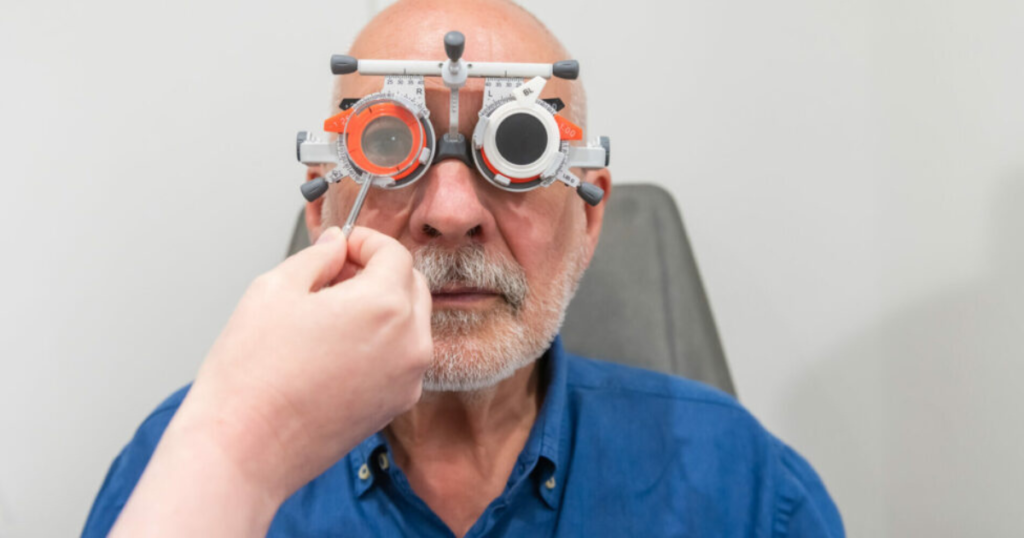When you receive a prescription for glasses, it might feel like you’re looking at a foreign language with all the numbers, terms, and symbols. One word that often stands out is “axis.” If you’ve ever wondered what the axis in your glasses prescription means, you’re not alone! In this blog, we’ll break down what axis means for your glasses, why it’s important, and how it relates to correcting your vision. Let’s dive in!
Understanding Your Glasses Prescription
Before we get to the axis, let’s take a moment to understand the basic elements of a glasses prescription. Typically, it consists of three parts:
- Sphere (SPH) – This indicates the amount of lens power you need to correct your nearsightedness or farsightedness.
- If the number has a minus sign (-), you are nearsighted (you see objects clearly up close but not far away).
- If the number has a plus sign (+), you are farsighted (you see distant objects clearly but struggle with near objects).
- Cylinder (CYL) – This part of the prescription is only present if you have astigmatism. Astigmatism is a condition where the cornea (the clear front part of your eye) is shaped more like a football than a basketball. This irregular shape causes blurry vision. The cylinder value indicates the degree of astigmatism and shows how much correction is needed.
- Axis – Now, here’s the term we’re focusing on. The axis is a number that ranges from 1 to 180. It tells your optician the exact direction or angle to position the cylindrical correction in your lenses.
What Does The Axis Mean?
The axis refers to the orientation of your astigmatism in degrees. It helps your eye doctor pinpoint where the irregularity in your cornea is located. If you imagine your eye as a circle, the axis indicates the angle in degrees where the astigmatism correction should be placed.
For example:
- If your axis is 90, it means the astigmatism correction is positioned vertically.
- If your axis is 180, the correction is aligned horizontally.
It’s important to remember that the axis value is only relevant if you have astigmatism. If your prescription doesn’t include a cylinder (CYL) value, there will be no axis number.
How Is The Axis Determined?
Your eye doctor determines the axis through a detailed eye examination. They use a tool called a phoropter to measure how light focuses in your eye. Based on these measurements, they’ll know whether you have astigmatism and at what angle the corrective lens should be placed to help you see clearly.
It’s not something you would notice directly, but if your glasses don’t have the correct axis placement, your vision may be blurry or uncomfortable because the lenses won’t properly address the uneven shape of your cornea.
Why Is the Axis Important?
The axis is crucial because it allows for the precise placement of the lens correction. Think of it like tuning a radio. If the dial is off by just a little, the signal becomes fuzzy. Similarly, if the axis is even slightly off, your vision won’t be as sharp, and you could experience discomfort.
The main reason the axis is important is that it ensures your lenses work perfectly for your specific vision problem. If your astigmatism isn’t corrected properly, it could result in:
- Blurred vision
- Eye strain
- Headaches
- Difficulty focusing
This is why accuracy in the axis value is key to making sure your glasses help you see your best.
Does The Axis Change Over Time?
Astigmatism can change slightly over time, which means your axis might change as well. It’s not uncommon for the shape of your cornea to shift as you age, which could require a new prescription with a different axis value.
This is why it’s important to get regular eye exams, even if your vision seems fine. Your eye doctor will check your astigmatism and ensure your prescription is up to date. If you feel that your glasses aren’t as effective as they used to be, or if you notice headaches or eye strain, it could be a sign that your prescription, including the axis, needs adjustment.
What Happens If The Axis Is Wrong?
If your prescription is incorrect, particularly the axis, you may experience several issues. Glasses with an incorrect axis value will not properly correct your astigmatism, leading to problems like:
- Distorted vision: You might notice things look wavy or stretched out.
- Double vision: You could see double or have trouble focusing on objects.
- Headaches and eye strain: Incorrect lenses can make your eyes work harder, leading to fatigue and discomfort.
This is why it’s essential to follow your optician’s instructions and wear lenses that match your exact prescription, including the axis.
How Does The Axis Affect Lens Design?
When creating lenses for people with astigmatism, the lens must be designed to match both the cylinder power and the axis angle. These lenses have a special shape that compensates for the uneven curvature of the cornea. Without the correct axis, the cylindrical part of the lens won’t be aligned properly, making the correction ineffective.
Modern technology allows for highly precise lenses, ensuring the axis is placed exactly where it needs to be for optimal vision correction. This process is automated, which reduces human error and ensures that your glasses are made with precision.
Conclusion
The axis in your glasses prescription may seem like a small detail, but it plays a crucial role in ensuring that your vision is corrected accurately, especially if you have astigmatism. By specifying the exact angle for the cylindrical correction, the axis ensures that the lenses are tailored to fit the unique shape of your eyes.






